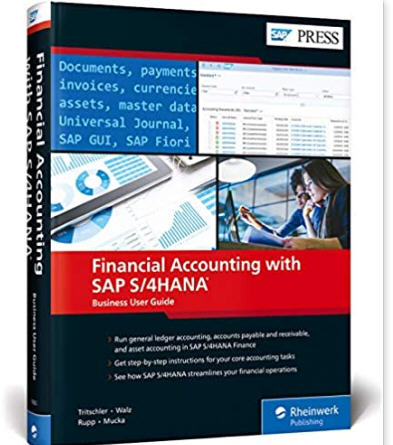Organizational Structure and Integration
What is the organizational structure in SAP S/4HANA?
The organizational structure in SAP S/4HANA represents the hierarchical structure of a company, consisting of different organizational units, such as company code, plant, sales organization, and profit center. These units are assigned to each other in a specific hierarchy, enabling companies to manage and track their financial transactions across different units.
How is integration achieved in SAP S/4HANA?
Integration in SAP S/4HANA is achieved through the seamless exchange of financial data between different financial accounting components, such as General Ledger Accounting, Accounts Payable, Accounts Receivable, and Fixed Asset Accounting. This ensures accurate and real-time financial reporting and analysis across the entire organization.
General Ledger Accounting
What is a chart of accounts in General Ledger Accounting?
A chart of accounts
is a list of all the GL accounts used by a company to record its financial
transactions. The chart of accounts provides a framework for the recording
of financial transactions and enables the creation of financial statements,
including balance sheets, income statements, and cash flow statements.
What is a posting key in General Ledger Accounting?
A posting key is a two-digit numeric code used to identify the type of transaction being posted to a GL account in SAP S/4HANA. The posting key determines the account type, the debit or credit indicator, and the field status of the transaction.
Accounts Payable
How are invoices processed in Accounts Payable?
Invoices in Accounts Payable are processed through the creation of purchase orders, receipt of goods or services, and matching of invoices with purchase orders and receipts. This enables automatic invoice verification and ensures that invoices are accurate and approved before payment is processed.
What is a payment term in Accounts Payable?
A payment term in Accounts Payable is a set of conditions agreed upon between a company and its vendor or supplier that determines the payment due date and the discount offered for early payment.
Accounts Receivable
How are customer payments processed in Accounts Receivable?
Customer payments in Accounts Receivable are processed through the creation of invoices, receipt of payments, and allocation of payments to invoices. This enables automatic payment processing and bank reconciliation and ensures that payments are accurate and properly allocated.
What is a dunning process in Accounts Receivable?
A dunning process in Accounts Receivable is a process used to remind customers of overdue payments and to request payment of outstanding invoices. The dunning process involves the creation of dunning letters that are sent to customers, reminding them of their outstanding payments and requesting payment within a specific timeframe.
Fixed Asset Accounting
What is depreciation, and how is it calculated in Fixed Asset Accounting?
Depreciation is the systematic allocation of the cost of a fixed asset over its useful life. In SAP S/4HANA, depreciation is calculated based on the asset's acquisition value, useful life, and depreciation key. The depreciation key determines the method and rate of depreciation, which can vary depending on the asset class and the country-specific legal requirements.
What is an asset class in Fixed Asset Accounting?
An asset class in Fixed Asset Accounting is a category of fixed assets with similar characteristics and accounting requirements. Asset classes enable companies to manage and track their fixed assets more efficiently and to assign default values and depreciation methods to groups of assets with similar characteristics.
How can you monitor the status of a fixed asset in SAP S/4HANA?
SAP S/4HANA provides a range of reports and transactions for monitoring the status of fixed assets. For example, you can use the Asset Explorer transaction (AW01N) to display an overview of the asset master data and the transaction history. You can also use the Asset History Sheet report (S_ALR_87011990) to display the depreciation and acquisition values of the asset over time.
Customer Project Accounting
What is a customer project in SAP S/4HANA, and how is it different from a standard sales order?
A customer project is a type of sales order that involves delivering goods or services to a customer over a longer period of time and with multiple deliveries or milestones. The customer project is managed as a separate project within SAP S/4HANA, with its own project definition, project structure, and project cost accounting. This enables you to track the project progress, costs, revenues, and profitability in real-time.
How can you create a customer project in SAP S/4HANA?
To create a customer
project in SAP S/4HANA, you need to perform several steps, including defining
the project structure, assigning the WBS elements to the project, setting
up the billing plan, and linking the project to the sales order. You can
use various transactions and tools, such as the Project Builder (CJ20N),
the Work Breakdown Structure (WBS) element screen, and the Project Cost
and Revenue Planning tool (CJR2), to perform these tasks. Once the customer
project is created, you can monitor its progress and financials using various
reports and transactions, such as the Project Progress Analysis (CJ30)
and the Project Actual Cost Line Items report (CJEN).
